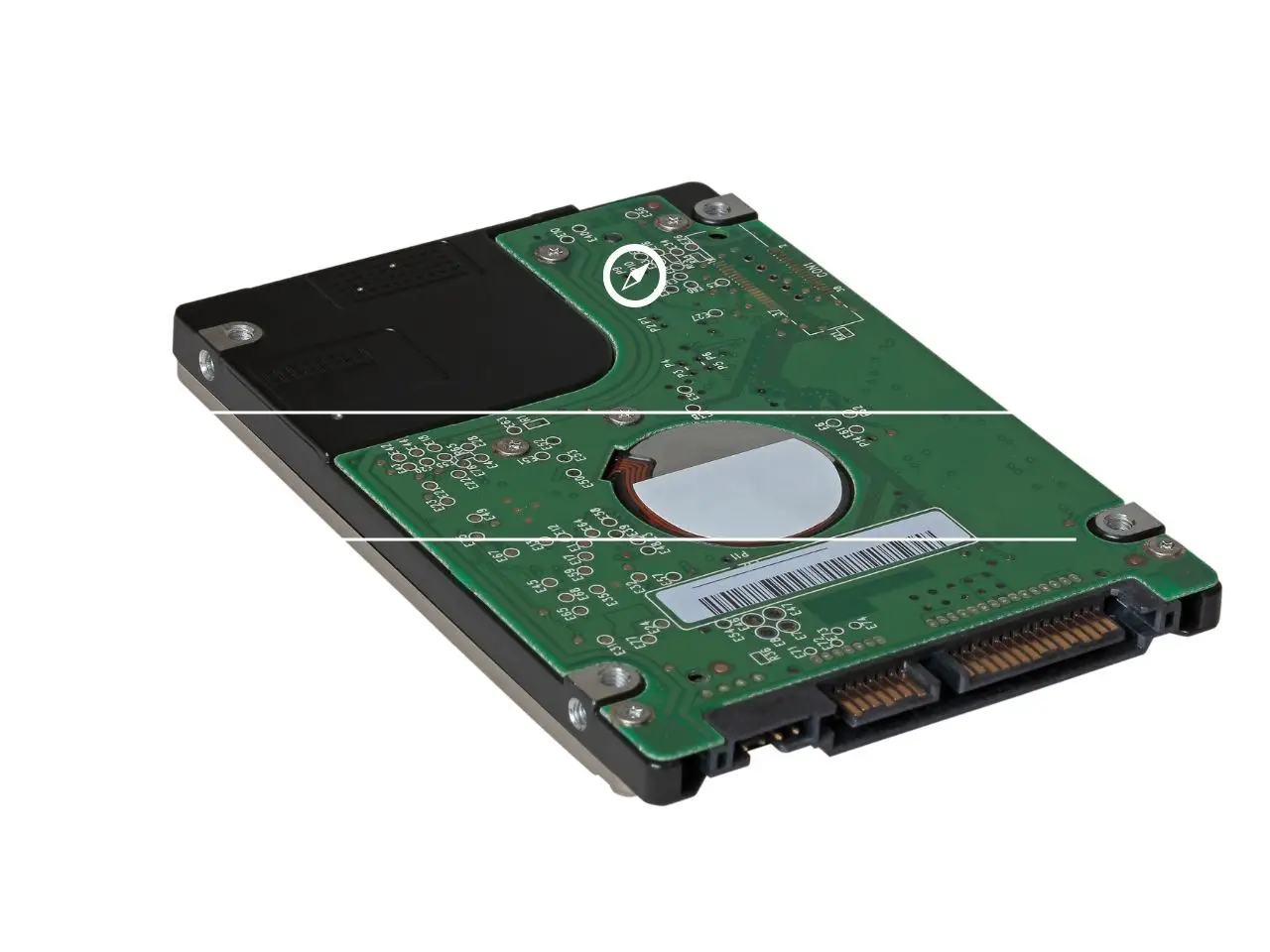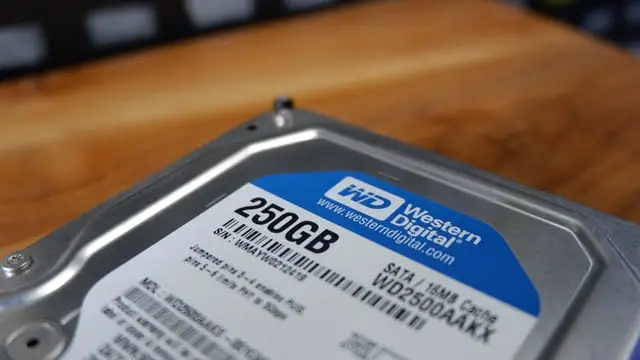What is fragmentation in computing? Definition, meaning, concept. In another post, I had talked about the importance of defragmenting the hard drive. Today I have returned to try to explain, especially to laymen, a little more the term. Started? In a generic way, fragmentation is the action of fragmenting, fragmenting, breaking into smaller pieces, breaking into several pieces.
Hard Drive: What is fragmentation in computing?

Fragmentation is a term that describes the condition of data that is stored noncontiguously on a storage device, such as a hard disk, memory module, or flash drive. Fragmentation occurs when data is written, deleted, or modified on the storage device, leaving gaps or holes between data blocks. These gaps make it difficult for the device to access data quickly and efficiently, as it has to jump from one location to another to read or write the entire file.
Types of fragmentation
There are different types of fragmentation that can affect the performance and capacity of a storage device. Some of the common types are:
- Internal fragmentation: This occurs when the storage device allocates more space than necessary for a file or block of data, leaving unused space within the allocated space. For example, if a file system allocates 4 KB for each file, but a file only needs 3 KB, then there is 1 KB of internal fragmentation.
- External fragmentation: This happens when the storage device has a lot of spaces or holes between the data blocks, making it difficult to find contiguous space for new files or data blocks. For example, if a file system deletes many small files, there will be many small spaces between the remaining files, which will create external fragmentation.
- Data fragmentation: This happens when a file or block of data is divided into several parts and stored in different locations on the storage device. For example, if a file system writes a large file that does not fit in contiguous space, it will divide it into smaller parts and store them where space is available, creating data fragmentation.
Problems and inconveniences
Fragmentation can cause several problems for a storage device, such as:
- Storage failure: Fragmentation can increase the risk of data loss or corruption, as the storage device has to work harder to access the fragmented data. If there is a power outage or hardware failure, some of the pieces of data may be lost or damaged.
- Performance degradation: Fragmentation can reduce the speed and efficiency of the storage device because you have to spend more time and resources locating and accessing fragmented data. This can affect the overall performance of the system that uses the storage device.
- Reduced capacity: Fragmentation can waste valuable storage space by leaving unused space within or between data blocks. This can reduce the space available for new files or blocks of data.
Solution
To overcome these issues, there are several workarounds that can help reduce or prevent fragmentation on a storage device. Some of the common solutions are:
- Defragmentation: This is a process that rearranges data on the storage device to eliminate or minimize gaps and gaps between data blocks. Defragmentation can improve the performance and capacity of the storage device by making it easier to access and store data. Defragmentation can be done manually or automatically using specialized software tools.
- Allocation strategies: These are methods that determine how the storage device allocates space for new files or blocks of data. Allocation strategies can help reduce fragmentation by choosing optimal locations and sizes for data blocks. Some of the common allocation strategies are the first fit, the best fit, the worst fit, and the next fit.
- File systems: These are structures that organize and manage data on the storage device. File systems can help prevent fragmentation by using efficient techniques to store and access data. Some of the common file systems are FAT, NTFS, ext4, and APFS.
Fragmentation based on operating system
One of the challenges developers face when creating apps for different platforms is fragmentation. Fragmentation refers to the diversity and inconsistency of hardware, software, and user preferences across devices. For example, an app that works well on an Android phone may not work smoothly on an iOS tablet or vice versa.
Fragmentation can affect various aspects of application development, such as compatibility, performance, security, and user experience. To deal with fragmentation, developers should consider the following factors:
– Operating system: The operating system (OS) is the software that manages the basic functions of a device, such as memory, storage, input/output, and networking. Different operating systems have different features, capabilities, and limitations that affect how applications run on them. For example, Android is an open-source operating system that allows users to customize their devices and install apps from various sources, while iOS is a closed-source operating system that restricts users to Apple’s ecosystem and app store. Developers need to ensure that their applications are compatible with the operating system versions and updates that their target users have.
– Hardware: Hardware refers to the physical components of a device, such as the processor, memory, battery, display, camera, sensors, etc. Different hardware configurations can affect application performance and functionality. For example, an application that requires high processing power may not work well on a device with a low-end processor or limited memory. Developers need to optimize their applications for different hardware specifications and test them on multiple devices.
– User preferences: User preferences refer to the options and settings that users have on their devices, such as language, region, accessibility, screen, sound, etc. Different user preferences can affect the appearance and behavior of applications. For example, an app that uses text-to-speech might not work correctly if the user has a different language or accent than the app expected. Developers must respect user preferences and provide customization and customization options.
Operating system-based fragmentation is a reality that developers must deal with when building cross-platform applications. By understanding the factors that cause fragmentation and applying best practices for compatibility, performance, security, and user experience, developers can build apps that work well across devices and platforms.
How to prevent RAM fragmentation in C++
RAM fragmentation is a common problem that affects the performance and reliability of C++ applications. RAM fragmentation occurs when the memory allocator cannot find a contiguous block of free memory that is large enough to satisfy a request, even though enough total free memory is available. This can lead to memory allocation failures, increased memory usage, and reduced cache efficiency.
There are several factors that can contribute to RAM fragmentation, such as:
- The size and frequency of memory allocations and deallocations
- The order and timing of memory allocations and deallocations.
- Aligning and filling memory blocks
- The implementation and configuration of the memory allocator.
To prevent or reduce RAM fragmentation, C++ programmers can use some of the following techniques:
- Use custom mappers that are tailored to the specific needs of your application or data structure
- Use memory pools or arenas that preallocate large portions of memory and subdivide them into smaller blocks
- Use Smart Pointers or RAII (Resource Acquisition is Initialization) to manage the lifespan of dynamic objects and prevent memory leaks
- Avoid allocating and freeing memory on different threads or modules
- Avoid mixing different types of memory allocators or libraries
- Use standard containers and algorithms that minimize unnecessary copying and resizing of memory blocks
- Use compression or serialization techniques to reduce the size of data structures
- Use tools and metrics to monitor and analyze memory usage and application fragmentation
RAM fragmentation is a silent performance killer that can affect any C++ application. By applying some of the techniques mentioned above, C++ programmers can improve the efficiency and robustness of their memory management and avoid wasting valuable system resources.
Data package

A data packet is a unit of data that is transmitted over a network, such as the Internet. It typically consists of a header that contains control information, such as source and destination addresses, and a payload that contains the actual data being transmitted. Data packets are used in network protocols such as TCP/IP, which is the most widely used protocol for communication over the Internet. Data packets are fragmented and transmitted on discrete drives to be efficiently routed and transmitted across the network, and reassembled at the receiving end to reconstruct the original data.
Data packaging refers to the process of dividing data into packets to transmit over a network and reassemble it at the receiving end. Packaging enables efficient and reliable data transmission over networks with different bandwidth, latency and reliability characteristics, such as the Internet. Packaging is a fundamental concept in modern networks and enables various Internet applications, such as web browsing, email, file transfer, video streaming, and more.
Packet fragmentation on the Internet
What is packet fragmentation and why does it occur on the Internet? In this blog post, we’ll explain the concept of packet fragmentation, the reasons why it happens, and the advantages and disadvantages of this process.
Packet fragmentation is the process of dividing a large data packet into smaller pieces that can fit into the maximum transmission unit (MTU) of a network link. A network link is a physical or logical connection between two devices on a network. The MTU is the maximum size of a data packet that can be transmitted over a network link without fragmentation.
The reason for packet fragmentation is that different network links can have different MTUs. For example, an Ethernet link has an MTU of 1500 bytes, while an IPsec tunnel has an MTU of 1400 bytes. If a device sends a data packet that is larger than the MTU of the next network link, the device or router connecting to that link will fragment the packet. The fragmented packets will then be reassembled by the target device or router.
The advantage of packet fragmentation is that it allows data packets to traverse different network links with different MTUs. This increases the compatibility and interoperability of different network technologies and protocols. Packet fragmentation also enables dynamic routing, meaning that data packets can take different routes to reach their destination depending on network conditions and availability.
The disadvantage of packet fragmentation is that it increases the overhead and complexity of data transmission. Packet fragmentation requires additional processing and memory resources on the sender’s and receiver’s devices or routers. Packet fragmentation also introduces additional headers and fields into each fragmented packet, reducing payload size and efficiency. Packet fragmentation also increases the risk of packet loss and corruption, as each fragmented packet must be successfully delivered and reassembled to recover the original data packet.
Note: This theme has been a constant throughout my career. When I started, I was servicing computer equipment and one of my tasks was to optimize the performance of the data on a hard drive. Now that I work with servers, it gives me some ideas on procedures and best practices.
Conclusion
Fragmentation is a common phenomenon in computing that affects the performance and capacity of storage devices. By understanding what fragmentation is, what causes it, what problems it creates, and what solutions are available, you can optimize your storage device and improve your system’s performance.
Webgraphy
Read also: Electromagnetic interference and data center, servers and hardware in general; What is hardware?; Fifth generation of computers
Editions 2019-20-21-23
This post is also available in:
![]() English
English ![]() Français (French)
Français (French) ![]() Deutsch (German)
Deutsch (German) ![]() Español (Spanish)
Español (Spanish) ![]() Dansk (Danish)
Dansk (Danish) ![]() Nederlands (Dutch)
Nederlands (Dutch) ![]() Svenska (Swedish)
Svenska (Swedish) ![]() Italiano (Italian)
Italiano (Italian)
